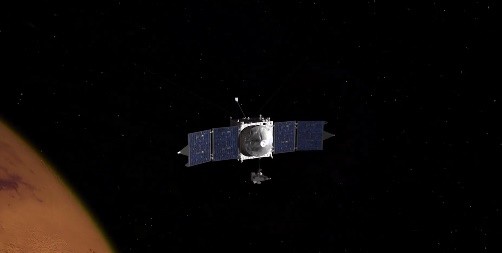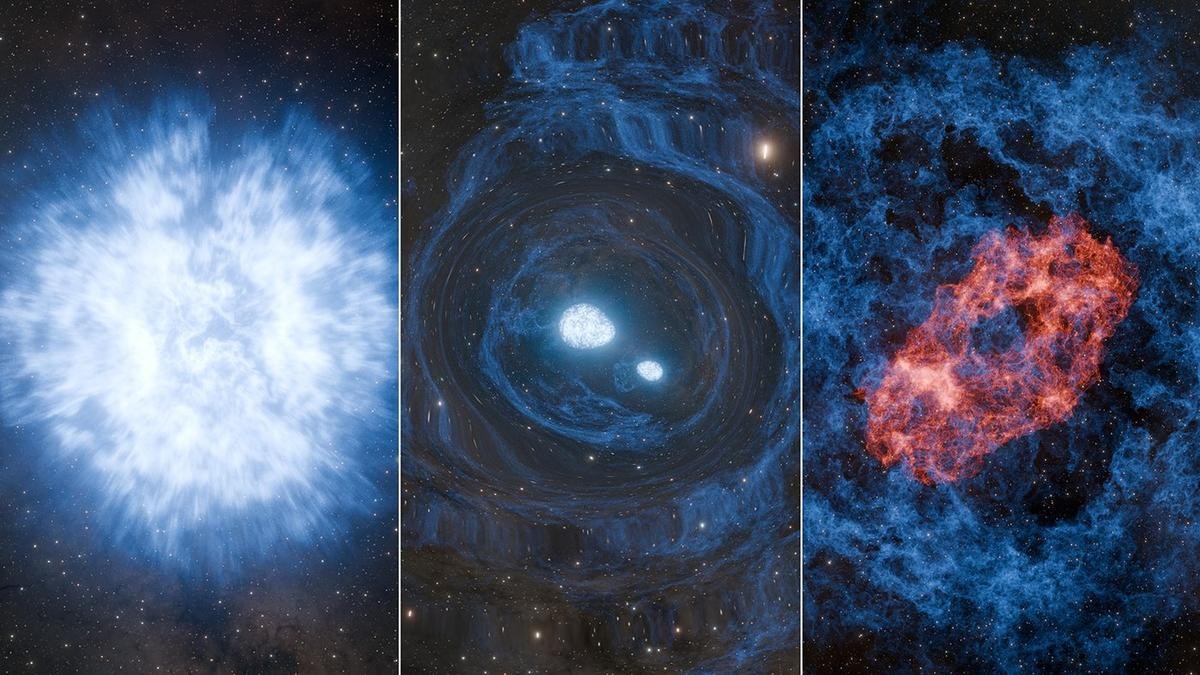



The James Webb Space Telescope and Keck Observatory captured rare methane clouds in Titan’s northern hemisphere, a first for Saturn’s moon. Infrared imaging revealed active weather and the methyl radical, a key organic molecule. NASA’s Dragonfly mission, launching in 2028, will explore Titan’s chemistry, seeking clues to prebiotic processes.

Copyright infringement not intended
Picture Courtesy: SPACE
Rare methane clouds in Titan’s northern hemisphere.
The James Webb Space Telescope (JWST) and Keck Observatory captured images of methane clouds in the northern hemisphere of Titan, Saturn’s largest moon, for the first time.
|
Titan is larger than the planet Mercury and the second-largest moon after Jupiter’s Ganymede. |
Earlier missions like Cassini-Huygens (2004–2017) observed clouds only in Titan’s southern hemisphere. This discovery is significant because Titan’s northern region hosts most of its methane lakes and seas, making it a focal point for studying weather patterns.
Earth-like Weather, but with Methane: Titan is the only moon in our solar system with a dense atmosphere and liquid cycles. Instead of water, Titan has methane clouds, rain, rivers, lakes, and seas.
Seasonal Changes: The JWST observed the Methane clouds during Titan’s northern summer, when scientists expected cloud activity due to increased sunlight. This aligns with Cassini’s past observations of southern clouds during its summer.
Infrared Imaging: Titan’s atmosphere is hazy, but JWST’s infrared cameras penetrated through this fog to reveal cloud structures.
Follow-Up with Keck: Days after JWST’s July 2023 images, the Keck Observatory in Hawaii confirmed the clouds’ movement, proving active weather patterns.
The JWST detected a new organic molecule called methyl radical (CH₃) in Titan’s atmosphere. This molecule:
Must Read Articles:
NASA's Dragonfly mission to explore Saturn's Titan
Source:
|
PRACTICE QUESTION Q. Why is reducing methane emissions considered a key short-term strategy in climate change mitigation? A) Methane has no economic value, unlike CO₂. B) Methane has a high solubility in water and causes ocean acidification. C) Methane has a high GWP and short atmospheric lifetime. D) Methane cannot be captured or controlled using existing technologies. Answer: C Explanation: Methane is a much more potent greenhouse gas than carbon dioxide (CO2) on a per-molecule basis. Over a 20-year period, methane is approximately 80 times more effective at trapping heat than CO2. This means that even small amounts of methane can have a significant warming effect. Unlike CO2, which can persist in the atmosphere for centuries or even thousands of years, methane has a relatively short atmospheric lifetime, typically around 10-12 years. |









© 2026 iasgyan. All right reserved